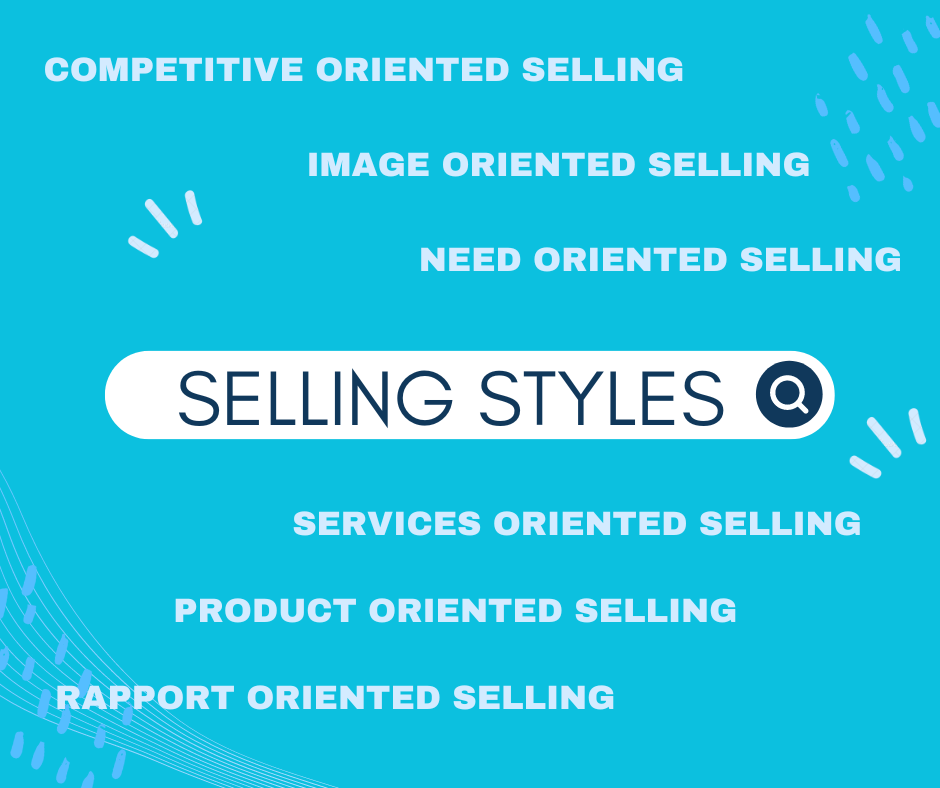In this article, Christer B. Jansson is focusing on providing you with examples on how to implement Selling Styles concept in your sales organization.
In the year 2000, George W. Dudley put together findings from 300.000 test results collected from different salespeople since the 70es. The aim was to see how they were selling. He hoped to find four distinct behavioral patterns and see how common these patterns are repeating when salespeople are selling.
His wish did not come through. Instead, he found six patterns that bleeds into each other. When he presented his research for Southwestern Psychological organization, he met a professor in procurement that said he have found six buying styles from his experience that looked like George’s six selling style, but he did not have the great number of data as George had. So, they worked together to find out how buying styles and selling styles are matching together. They found similarities in styles. For example, Need-Oriented Selling style worked very well with a Need-Based Buying style. It is like a conversation on “walkie talkie”. If you receive call on channel four, the salesperson needs to sell on channel four.

The six selling styles are as follows:
Service-Oriented Selling (S-O-S)
This selling style is likely to emphasize personal dependability, meeting obligations, fulfilling or exceeding client expectations and, most of all, keeping commitments.
Competition-Oriented Selling (C-O-S)
This selling style is likely to be organized around persuasion and direct interpersonal “influencing.”
Image-Oriented Selling (I-O-S)
This selling style comprises behaviors involved in “merchandising” and “packaging” a professional self-image.
Need-Oriented Selling (N-O-S)
This selling style focuses on discovering existing client needs that can be filled by the product or service being sold, rather than creating need in the client.
Product-Oriented Selling (P-O-S)
This selling style is likely to be arranged around describing, outlining, explaining, and detailing product features and benefits.
Rapport-Oriented Selling (R-O-S)
This selling style emphasizes the interpersonal elements of the sales process – especially those that are thought to facilitate the development of rapport, caring and trust.
How can you use this information for your sales organization is one important question to answer?
This concept, I have used it to solve two costly problems in different organizations. Also, I am using it as a simple fun training day in order for salespeople to understand how wrong it can go if using the wrong selling style when matching with another buying style. That is why salespeople need to develop more than one or two styles. Actually, if they already are good at one selling style why train that again? It is like a tennis player that have a great backhand, an average forehand and a bad serve trains the backhand to make it even better.
That doesn´t sounds effective.
My first problem was a sales organization where they have technical salespeople and field salespeople. They had an internal conflict as the technical salespeople did not want the field salespeople to sell their different machines before they mastered the machine. If a machine stopped working and they did not know how to fix it people could die.
When we looked at the selling styles test the technical salespeople where high on Service Oriented Selling and the field salespeople high on Competitive Oriented Selling. Before involving Managers and HR we made exercises, so everyone got to experience when it gets wrong and when it feels right.
After that we started a dialogue in mixed groups about what Selling Styles will be most important for long-term survival. Between the two styles named above. They all agreed that first Service Oriented Selling (SOS) styles need to be predominant over the Competitive Oriented Style (COS) and when SOS was satisfied, they could move into COS.
My second issue to handle in a very different company was this: When a good field salesperson was detected they moved them asap to a career as Key Account. Most of them failed regardless of the good intentions and they couldn´t go back as a new field salesperson was already hired to take their former position. Most of the time, they needed to leave with some extra salaries. Some with call it Peters Principle, they advanced to their incompetence level. I did not believe that so I thought it might be a buying- selling- style answer on this.
When I looked at what selling style worked best in field sales, it was Need-Based Selling Style combined with Competitive-Based Selling Styles. In Key Account, Need-Based worked good but Competitive style was a disaster in that position. So, if we move top performers from Field sales to Key Account, we need to train them not to use the Competitive Style and instead train them to use Need based in combination with the Service oriented style.
We stopped the drainage of Top Salespeople from Field sales and found it better to employ people that suited the Key Account position better. Also, we found how to help field salespeople to grow and find a career, so they stay longer and enjoy their job.
These are two great examples where we used the research of selling styles to it´s best.
Of course, you can use it as well to understand why some of us have hard time to get some prospect to buy from us. Perhaps, why they prefer to buy from our competitors.
If you want to find out how you can use the test and concept information to your advantage, contact us and we will provide you with specific information.
Written by Christer B. Jansson

